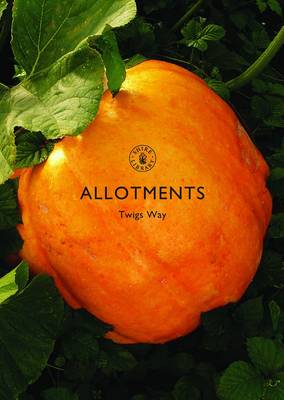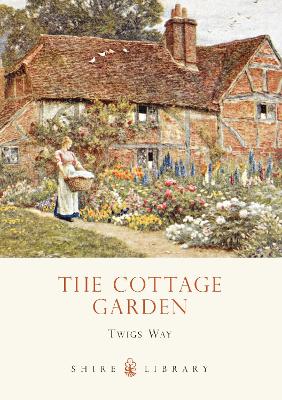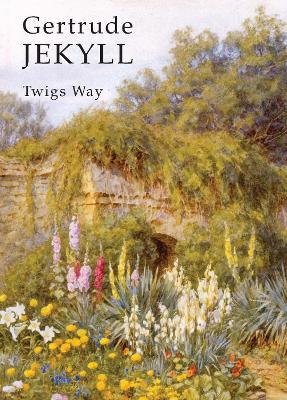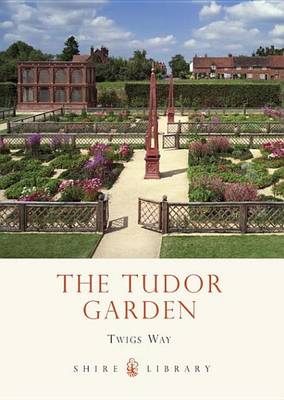Shire Library
7 primary works
Book 469
The humble allotment has a surprisingly turbulent history. Initially the right to an allotment was proposed as a charitable means by which the poor could grow their own food and stave off starvation, but it quickly entered political and social debate. During the World Wars the allotment became the focal point on the home front, as families took part in the Dig for Victory campaigns. The post-war years saw a decline in the popularity of the allotment as the supermarket took over from home-grown produce. Successive governments condemned allotments in favour of new housing. Recently, however, with increased concerns about the environment and the organic movement, allotments are in vogue once more. This book charts the rise and fall of the allotment - and the factors behind its most recent resurgence. Drawing on original documents and illustrations, the author explores the fascinating and surprising history of the allotment within the context of its social and political history.
Book 487
This is the intriguing story of garden gnomes and how they have come to reside in the flowerbeds of gardens across Britain. Originating in Europe, gnomes made the leap across the channel in the nineteenth century, where they were welcomed warmly by wealthy Brits who saw them as the must-have garden accessory. But the fortunes of the humble gnome were not to last, and they soon found themselves sneered at by serious gardeners. Turned away from fashionable gardens, the little gnomes found a friend in many a working class gardener, who adopted them in increasing numbers, and in a variety of humorous poses. Today, gnomes are as popular with the masses as ever, and this entertaining illustrated history will appeal to those who love, and hate, these small bearded characters.
Book 580
Topiary, the art of creating sculpture in clipped plants, originated with the Romans and experienced periods of popularity during the Renaissance and Jacobean eras. However, as the fervour for 'natural' landscapes swept through Europe in the eighteenth century, fashion mocked the few gardeners who continued to clip, and in 1890, William Robinson claimed that 'a man with shears in his hands is doing fool's work'. But as 'ye old Englishe garden' found favour again, so the chess pieces, crowns and artful peacocks broke cover. Today, topiary has seen a revival, and amateurs in the art can purchase 'preformed' rabbits and deer to graze suburban lawns.
Book 619
Hollyhocks and cabbages, roses and runner beans: the English cottage garden combined beauty and utility, pride and productivity. But what was the reality of the space immortalised in images of thatched cottages with floral borders and ducks on the path? For many the garden was crucial in keeping food on the table, for many simply a status symbol and blaze of colour; and gardens did not just appeal to the senses, but played a philosophical and moral role in society, and thus in our social history. Visions of the rural cottager were never far from the mind of the Victorian middle classes, whether as a shining example to the indigent urban poor or as an aesthetic and social ideal of a utopian 'merrie England'. The Cottage Garden is the history of this varied and important phenomenon and its myriad concepts and incarnations.
Book 663
Almost eighty years after her death, Gertrude Jekyll (1843-1932) is still one of the most influential of all English garden designers. Best known for the superb use of colour schemes in her hallmark flower borders, she combined an early training in art with self-taught horticultural skills. Early influences included William Morris, John Ruskin and William Robinson, but it is her partnership with the architect Edwin Lutyens that produced some of the most distinctive of Edwardian houses and gardens. From her house (and nursery) at Munstead Wood, Surrey, Jekyll designed over 400 gardens across Britain and Europe, and some in America where her archive of designs and drawings is now held. This book explores her life, influences on her early work in art and crafts, the transfer to Munstead Wood and working relationship with Edwin Lutyens, as well as her own writings and achievements.
Book 720
Contrived, colourful and cultured, the Tudor garden was a paradise on earth, given over to pleasurable pastimes and aesthetic effect. Artificiality was the fashion of the age, with clipped and twining plants vying for space with brightly painted woodwork and patterned beds.Renaissance discoveries reared their heads in royal gardens, where gilded and painted heraldic figures mingled with fantastical sundials and glittering fountains. Walls kept out the wild world beyond, while mounts afforded glimpses to new parklands and provided raised platforms for the banqueting houses of the wealthy. Ever-changing with newly introduced exotic plants, yet featuring year-round knot gardens, the Tudor garden was a vibrant pageant, and is given a suitably colourful celebration in this fully illustrated book.
Book 824
'This War is a Food War...' In 1941 Lord Woolton, Minister for Food, was determined that the Garden Front would save England: 'Dig for Victory' was the slogan, digging for dinner the reality. With food imports dwindling the number of allotments grew, millions opted to 'Spend an Hour with a Hoe' instead of an hour in a queue, and the upper classes turned lawns, tennis courts and stately gardens over to agriculture. The national diet was transformed, with swedes grown in the place of oranges and hapless children sucking on carrot lollies; evacuees grew their own meals and bomb sites sprouted allotments. Vegetables ruled the airwaves with Mr Middleton's 'In Your Garden' whilst Home Guard potatoes became the favourites of the Kitchen Front. This is a fully illustrated look at the time when gardening saved Britain.






